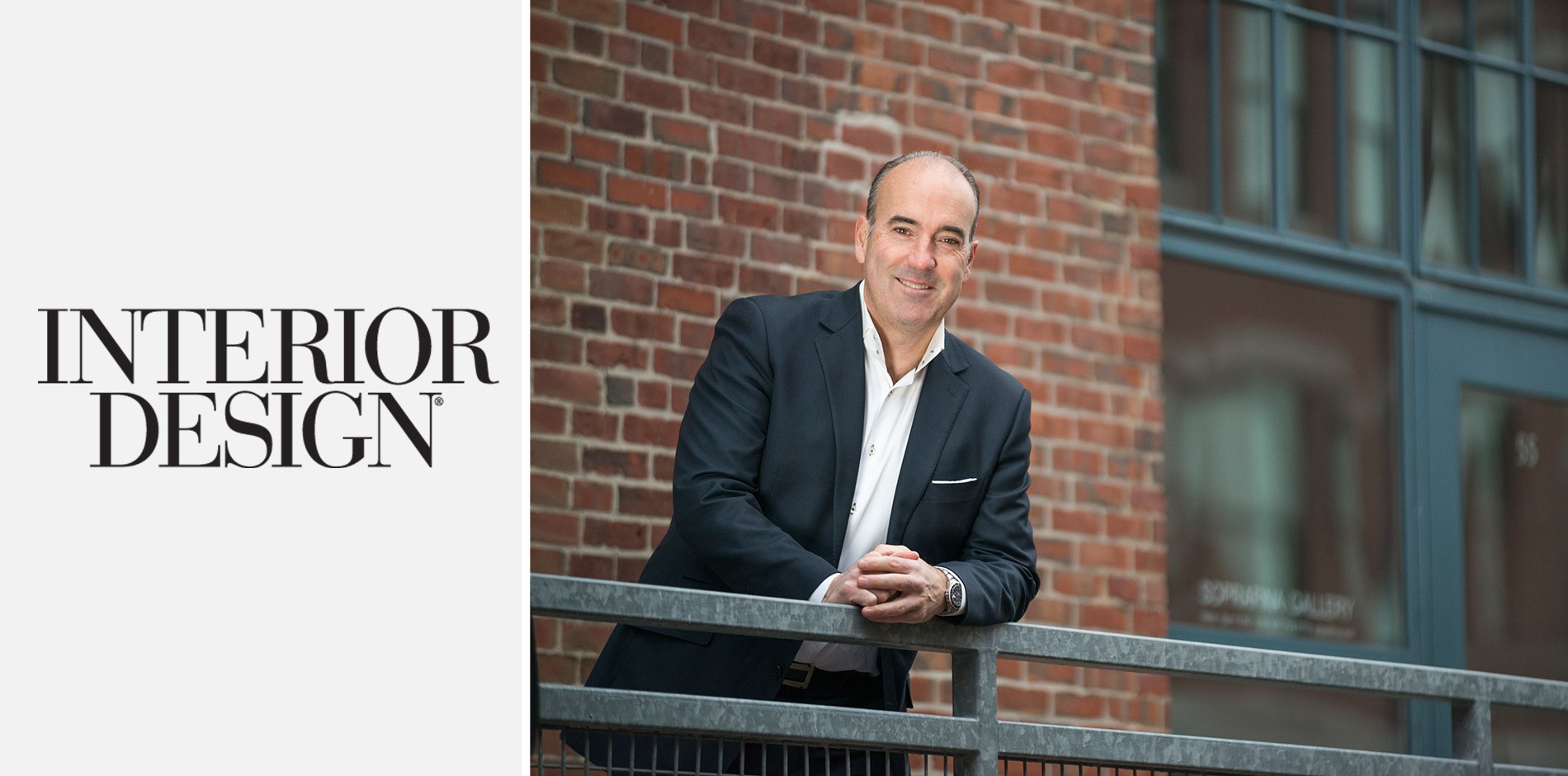Before becoming president and CEO of Shawmut Design and Construction, a construction management firm with offices in New York City, Boston, and beyond, Les Hiscoe spent 25 years working in the construction industry as an engineer and later as a field superintendent, project manager, and eventually an executive. He’s seen the industry from all angles and has found that the key to his success is having open communication with his clients and encouraging collaboration. In addition to running a $1.2 billion firm, Hiscoe is a huge proponent of mentorships and spends his time off doing charity work and cycling.
Here, we talk to him about the importance of historical preservation, why mentorships are key at getting ahead, and his obsession with cycling.
Interior Design: What was the first project you worked on that made you realize that a career in engineering was right for you?
Les Hiscoe: My first project was when I was in college. I worked on an old mill in New Hampshire, where I’m from, that we turned into an R&D lab for the guy who invented the Segway. The building was all old brick and old wood and old windows that we renovated and restored. It became a beautiful space and I just got an appreciation for taking something old and making it into a great space right out of the gate. I was in engineering school and I thought I was going down a design path but realized I liked building more than designing.
ID: What has been the greatest achievement of your career thus far?
LH: Getting to the point of having worked my way up through the industry from field superintendent to project manager to executive and divisional head to finally running a company. Certainly making CEO of this company has been my greatest professional achievement. And doing it by always believing in the client and giving the client the best service, experience, and value, and creating that relationship, that’s been a wonderful part of it. On the personal side, having my 8-year-old son Jack is by far my greatest achievement in life.
ID: Your firm’s list of clientele includes A-list names like Harvard University, Louis Vuitton, Apple, Petco Park, and the Whitney Museum. Is it tricky working on projects in so many sectors?
LH: We’re organized the firm by expertise-driven verticals, so the high-end luxury retail group works on [projects in that sector]. Over time they get to understand the clients and what they want, and they’re knowledgeable about the finest and most unique materials. So the team develops a real expertise working on that and we keep those teams together, again all coming from the mindset that the client experience is the most important thing. In the academic sector, we have teams that know classroom buildings cold and dormitories cold; it’s the same thing with all the other sectors. We’ve structured the company to drive expertise by sector. It’s not tricky, it’s strategic in how we approach things.
ID: You’ve also worked on several church and historical construction projects. Is your approach different for these spaces?
LH: It’s not. One of the words we use within the company culture is “care,” so we want to create a culture of care and respective for our people at work so they feel great and deliver great service. We also have a culture of care and respect for the buildings we work on, whether it’s the Apple glass cube on Fifth Avenue [in Manhattan] that’s incredibly modern and precise or the historical restoration of stonework on a 100-year-old church or academic building. There are definitely complexities with historical buildings, so we have historical preservation experts on staff that can tell you the specific quarry where a piece of limestone came from in France.
ID: Are you selective with which clients you work with?
LH: We are. We want to work for clients that value a very high level of client service, that value lots of communication and proactivity, and that need our help in preplanning a project. We’re such a business partner to our clients that they don’t make a move without us—that’s the vision. There are lots of clients that have robust design and construction departments, and they’re pretty good at doing things themselves, so they don’t need our level of service and partnership, so we look for the clients that do need it.
ID: Shawmut’s philosophy is to make client service a top priority in what’s called “The Ride.” Can you elaborate on this?
LH: “The Ride” is a term we’ve used for a long time. We feel that delivering a high-quality product on time and on budget is a basic ride. It’s the price of entry to be considered for a project of significance. “The Ride” is above that. Does the client feel that the communication was exceptional and that we were proactive about keeping them informed and ahead of time so that there were no surprises? Did we come up with creative ideas to save them time and money? We want it to be a fun and collaborative experience. To use a car analogy, a perfectly fine Chevy can get you from point A to point B, but a Ferrari [can do the same] and it’s a different feeling ride.
